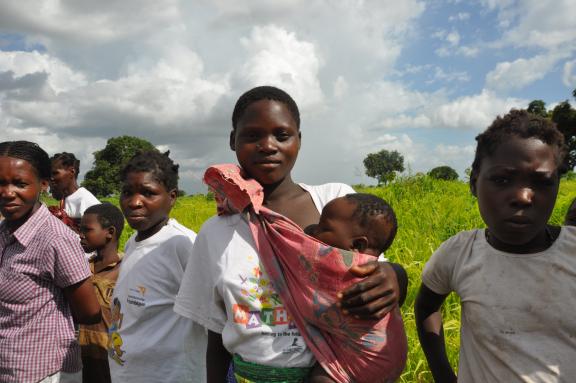If you are a social and behavior change (SBC) professional working within nutrition programs, this resource collection is for you.
Access these resources for inspiration and techniques to solve a challenge or “level up” for greater effectiveness in your nutrition program or services. The resources included here range from case studies, guides, and briefs to job aids, data analyses, and research insights.
Nutrition activities and services often identify an audience as “caregivers,” yet caregivers are not a monolith; they can be divided into many types. Without audience segmentation, activities may not meet the specific needs and preferences of each type of audience. This basic how-to guide walks nutrition program and service designers through a step-by-step process for strategy and activity design, as well as for more advanced use during research analysis.
Why do people in a specific context make the decisions they do? Without deep insights into drivers of nutrition behaviors, services and activities can miss the mark. This brief series describes how behavioral design led to deep insights into health worker and parent behaviors and to local solutions based on these insights.
Nutrition services often use the same tools over many years, despite documented implementation challenges. What do health workers actually want and need? Community health workers (CHWs) in Nigeria co-created this job aid using human-centered design (HCD) to resolve common challenges. The process included iterative testing and refinement of prototypes to come up with the one preferred by CHWs.
Tailoring activities to the characteristics, needs, and values of important audience segments improves the chances of successful behavior change. Employing advanced audience segmentation techniques, this data analysis led to the creation of modules to be included in a nutrition survey aiming to increase women’s dietary diversity. Understanding the various segments or subcategories of women enables programs and services to tailor outreach, counseling, and marketing activities for better uptake.
View Resource ›
Qualitative research, informed by behavioral science, can capture unique insights through deeper understanding of perspectives, experiences, and challenges of different audiences. Insights from behavioral-focused research in South Kivu, Democratic Republic of the Congo, helped families identify concrete actions they can take to put child feeding intentions into practice.
Human-centered design integrates rapid prototyping or exploration of design iterations during research and testing, which can help strengthen product, service, or system design. Iterative prototyping and refinement with CHWs in South Sudan during research allowed for co-creation of tools to identify and track malnutrition at the household level that met users’ needs and addressed various contextual issues.
Continued child feeding during periods of illness is critical for children’s recovery and nutrition. Using behavioral design, health workers and families identified solutions to improve counseling during sick child visits and encouraged families to take concrete actions to put their intentions to feed their children well into practice.
This case study found a strong link between how well community health workers in Kenya performed and their motivation levels. Doing well at work made them more motivated and vice-versa.
As in many countries, Nigeria has seen little to no improvement in child feeding practices despite years of investment. CHWs in Nigeria co-created this job aid using HCD to resolve some of the common challenges that have impeded progress in this area.
We want mothers and caretakers to know how much their children’s daily intake should be so that they feed them the right amount per age. In Cambodia, a program aimed to increase children’s consumption of vegetables. The team and local families co-created and tested intervention prototypes. They settled on promoting ways to make mealtimes fun and activating market stalls with “Supermom” signage and a Veggie Challenge.
We want mothers to adopt an age-appropriate complementary feeding practice so that their babies are not malnourished. In Myanmar, a program aimed to improve children’s dietary diversity. To do this, the team and local families co-created and tested a variety of behavioral intervention prototypes. These included physical tools, information channels, and messages. They discarded unsuccessful prototypes and further developed more successful ones. Families most preferred the “Banana Bags” kit.
In India, a program aimed to improve uptake and adherence of iron folic acid (IFA) supplements. Recognizing that adherence challenges are often due to behavioral barriers, the team tried a few different solutions, including job aids, testimonials, a calendar, and an interactive-voice-response call. They learned what worked and didn’t work in their context.
This case study explores how HCD helped identify creative solutions to change gender roles and norms in Mali that led to a low demand for preventive health behavior.
